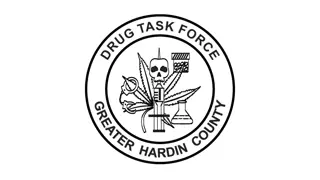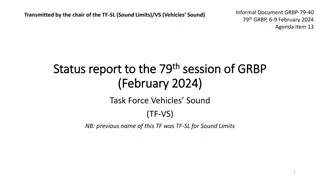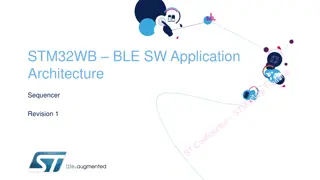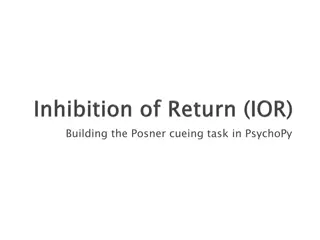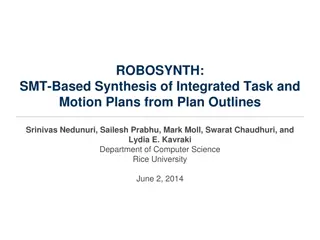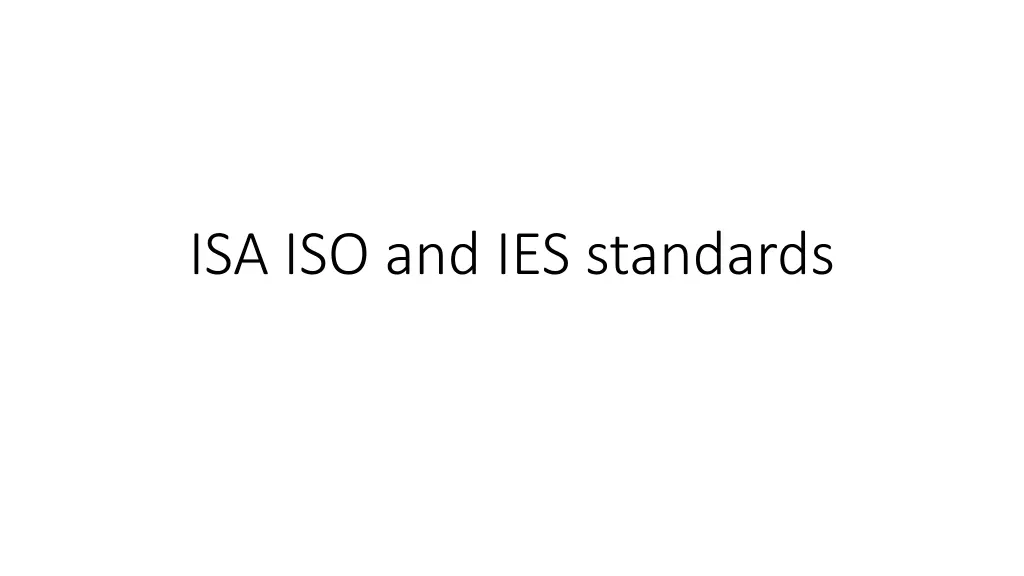
DCS Standards and Best Practices
Discover the essential standards used in Distributed Control Systems (DCS), including hardware, software, data, safety, documentation, collaboration, and interoperability. Learn about key organizations like ISA, ISO, and IEC. Explore the importance of communication protocols, data acquisition standards, software frameworks, safety systems, data formats, and more for efficient DCS operations.
Download Presentation

Please find below an Image/Link to download the presentation.
The content on the website is provided AS IS for your information and personal use only. It may not be sold, licensed, or shared on other websites without obtaining consent from the author. If you encounter any issues during the download, it is possible that the publisher has removed the file from their server.
You are allowed to download the files provided on this website for personal or commercial use, subject to the condition that they are used lawfully. All files are the property of their respective owners.
The content on the website is provided AS IS for your information and personal use only. It may not be sold, licensed, or shared on other websites without obtaining consent from the author.
E N D
Presentation Transcript
General standards used for DCS Hardware Standards Software Standards Data Standards Safety Standards Document Standards Collaboration and Interoperability
General standards used for DCS 1. Hardware Standards: Communication Protocols: Standardized communication protocols, such as Ethernet, USB, or custom protocols based on the requirements of the experiment. Data Acquisition Standards: Depending on the experiment, there might be specific standards for data acquisition systems, such as VME (Versa Module Eurocard), PCI (Peripheral Component Interconnect), or more modern standards like PCIe (PCI Express). 2. Software Standards: Control System Frameworks: Many experimental setups use control system frameworks such as EPICS (Experimental Physics and Industrial Control System) or TANGO Controls. These frameworks provide a structure for developing distributed control systems. Programming Languages: Commonly used programming languages include C/C++, Python, and Java. Middleware: Middleware technologies like CORBA (Common Object Request Broker Architecture) or ZeroMQ might be employed for communication between different components.
3. Data Standards: Data Formats: Standardized data formats for storage and exchange of experimental data. Common formats include ROOT, HDF5, or specific formats developed for the experiment. 4. Safety Standards: Interlocks and Safety Systems: Detectors are often integrated into safety systems to ensure that experiments can be conducted safely. Safety standards for interlocks and emergency shutdown systems are crucial. 5. Documentation Standards: Documentation Practices: Clear documentation of the control system architecture, software interfaces, and hardware specifications is essential. This helps in understanding, maintaining, and upgrading the system. 6. Collaboration and Interoperability: Interoperability Standards: Standards that facilitate collaboration and interoperability between different experiments or facilities. This is important in cases where multiple experiments share resources or collaborate on certain aspects.
Different standards considered for DCS 1. ISA (International Society of Automation) 2. ISO (International Organization for Standardization) 3. IEC (International Electrotechnical Commission) 4. EPICS (Experimental Physics and Industrial Control System)
1. ISA (International Society of Automation): ISA is a global non-profit organization that develops and publishes standards for automation and control systems. ISA-5.1 Instrumentation Symbols and Identification: This standard establishes a system for the identification of instrumentation and control devices. 2. ISO (International Organization for Standardization): ISO develops and publishes international standards covering a wide range of industries. ISO 9001 Quality Management Systems: While not specific to control systems, ISO 9001 is a widely adopted standard for quality management, which could be relevant for ensuring the quality of control system processes. 3. IEC (International Electrotechnical Commission): IEC is an international standards organization specializing in electrotechnical standards. IEC 61131-3 - Industrial automation systems - Programmable controllers: This standard defines the programming languages and associated elements for programmable controllers used in industrial automation systems. 4. EPICS (Experimental Physics and Industrial Control System): EPICS is not a standard-setting organization like the others mentioned, but it's a widely used open-source software toolset for building control systems. Many physics experiments, including those in the field of high-energy physics, use EPICS. EPICS Base: EPICS provides a set of software tools and applications for building distributed control systems, and EPICS Base is the core software.
ISA 88 ISA-88, also known as the ISA-88 Batch Control Systems standard, is a widely recognized standard developed by the International Society of Automation (ISA). The full title of the standard is "ISA-88: Batch Control Part 1: Models and Terminology" and it's part of the ISA-88 series. This series provides guidelines for the design and implementation of batch control systems in manufacturing. The ISA-88 standard defines models and terminology for batch control systems, providing a common framework and language for the design and operation of batch processes. It establishes standards for the structure of batch control systems and defines concepts such as: Physical Model: Describes the physical equipment and devices involved in a batch process. Procedural Model: Describes the procedures followed in a batch process, including recipes and recipes management. Coordination Model: Describes the coordination between different elements of the batch process. The standard aims to improve communication and understanding between manufacturers, system integrators, and suppliers involved in batch manufacturing processes. It provides a foundation for the development of batch control systems and helps ensure consistency and interoperability.
ISA 95 ISA-95, also known as ANSI/ISA-95 or ISA-95.00.01, is a standard for enterprise and control systems integration developed by the International Society of Automation (ISA). Its full title is "Enterprise-Control System Integration - Part 1: Models and Terminology." ISA-95 provides a framework for integrating enterprise and control systems, aiming to standardize the integration of business systems (such as Enterprise Resource Planning - ERP) with manufacturing and control systems. The standard defines models and terminology that facilitate communication and understanding between different levels of an organization. The key parts of ISA-95 include: Part 1 - Models and Terminology: This part establishes the concepts, models, and terminology for the integration of enterprise and control systems. Part 2 - Object Models and Attributes for Manufacturing Operations Management: This part focuses on object models and attributes for various aspects of manufacturing operations. Part 3 - Models of Manufacturing Operations Management: This part provides models for the integration of manufacturing operations with the business systems. ISA-95 is particularly relevant in industries where the integration of information technology (IT) systems with industrial automation and control systems is crucial for achieving efficient and effective operations. It helps define a common language and understanding between different stakeholders in an organization, such as operations, IT, and management.
ISA 99 ISA-99, also known as ANSI/ISA-99 or ISA-99.00.01, is a standard developed by the International Society of Automation (ISA) titled "Industrial Automation and Control Systems Security." This standard is more commonly known as ISA-99 or ISA/IEC 62443. The full title of the standard is "ISA-99.00.01-2007 - Security for Industrial Automation and Control Systems: Concepts, Terminology, and Models." ISA-99 focuses on the security of Industrial Automation and Control Systems (IACS) to address the unique challenges and requirements in industrial settings. It provides a framework and guidelines for implementing security measures to protect critical infrastructure from cyber threats. The standard defines concepts, terminology, and models related to industrial automation and control systems security. Key components and parts of ISA-99 include: Part 1: Concepts and Models: Establishes terminology and models for the description of industrial automation and control system security concepts. Part 2: Policies and Procedures: Provides guidelines for developing security policies and procedures specific to industrial automation and control systems. Part 3: System Security Requirements and Security Levels: Focuses on defining security requirements and security levels for industrial automation and control systems. Part 4: Secure Product Development Life-Cycle Requirements: Addresses the security aspects throughout the development life cycle of industrial automation and control system products. Part 5: Security for Process Automation Systems: Specifically addresses security considerations for process automation systems. ISA-99 is widely recognized and used in industries where securing industrial control systems is critical, such as in manufacturing, energy, and other critical infrastructure sectors.
Comparison between ISO ISA and IES ISO (International Organization for Standardization), ISA (International Society of Automation), and IEC (International Electrotechnical Commission) are three distinct organizations that develop and publish international standards. Each organization has its focus and scope, and they collaborate on some standards. Here's a brief comparison: 1. ISO (International Organization for Standardization): Focus: ISO is a global body that develops and publishes international standards across various industries, including manufacturing, technology, healthcare, and more. Scope: ISO standards cover a broad range of topics, and they are not limited to specific sectors or industries. Example Standard: ISO 9001 for Quality Management Systems is a widely known ISO standard. 2. ISA (International Society of Automation): Focus: ISA primarily focuses on standards related to automation and control systems. It plays a key role in the development of standards for industrial automation and instrumentation. Scope: ISA standards are often specific to the field of automation, covering topics such as process control, safety systems, and industrial cybersecurity. Example Standard: ISA-88 for Batch Control Systems provides guidelines for the design and operation of batch processes. 3. IEC (International Electrotechnical Commission): Focus: IEC is a global organization that develops and publishes international standards for all electrical, electronic, and related technologies, including power generation, transmission, and distribution. Scope: IEC standards cover a wide range of electrical and electronic technologies, from consumer electronics to industrial automation. Example Standard: IEC 61131-3 for Programmable Controllers is a standard for the programming languages used in programmable logic controllers (PLCs).
In summary: ISO covers a wide range of industries and sectors with a broad scope of standards. ISA specializes in standards related to automation and control systems, especially in industrial settings. IEC focuses on standards for electrical and electronic technologies.


